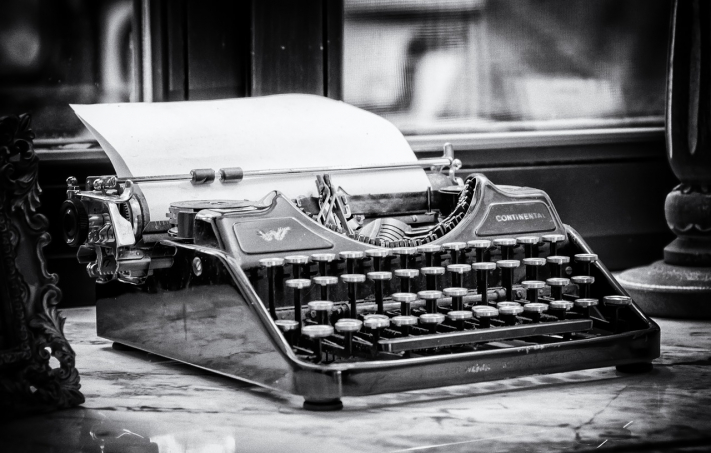
In normal times, our team of volunteer reviewers are prolific: attending plays, concerts, exhibitions and gigs all over Oxfordshire to share their thoughts on our thriving events scene. Following the closure of indoor venues at the start of the coronavirus lockdown, they kept their writing muscles trained with some different styles and purposes, ranging from fictional short story to memoir.
Lockdown Diaries, Felicity van Steenbergen
Andy had wanted to ask her for ages, but the timing had somehow never been quite right. First it had been Susie’s sinusitis, then the heater had broken in his flat, then Dave had crashed on his sofa for a week. One way or another, months had passed and he still hadn’t broached the subject. His mum would say “There’s always some excuse with you”. Maybe she was right. Deep down, he wasn’t even sure he wanted to live with somebody else. He loved spending time with Susie, of course he did, but he was used to his own space. Very few people understood the importance of a colour-coded bookshelf; they all asked how he could possibly find what he was looking for, if it wasn’t alphabetised.
A walk was what he needed. Fresh air and a chance to clear his head. “I am allowed”, Andy thought to himself; “once a day, I’m allowed to go out and just walk around”. It felt strange needing permission for such a simple act as walking. He left his flat and walked south down Latimer Road, his hood up. He didn’t want to be near the shops, near other people. It was cooler tonight, like rain might be on its way. On Lime Walk, he saw a young mum coming towards him with a pram and he crossed the road. How quickly that had become an instinct. All those years of Pac-Man, Andy thought to himself, smiling; he could avoid oncoming pedestrians better than anyone.
~
Just leaving the house had felt odd this evening. Alice had stared at the lead for a good five minutes before she’d stepped out onto the pavement. The leather strap hung loose in her hand, familiar. She headed down The Croft, away from the park. She couldn’t bear to do her usual loop. Loud voices echoed out from Laurel Close and Alice quickened her step. There were reminders of him everywhere; signs about binning poop, a faraway bark, Peanut’s favourite tree. She’d only had him 4 years. As soon as she’d spotted him at the sanctuary she knew she’d end up taking him home. It wasn’t supposed to end like this, Alice thought.
At first, she’d assumed the vets would be closed, just like everything else, but she’d phoned, just to see. “You can bring him,” they’d said, “but you won’t be able to come in”. So she’d waited outside, the early afternoon sunshine sweating her neck. It was a short phone call, though they hadn’t made her feel rushed. “I don’t want him to suffer,” Alice had said, trying to sound firm, despite the tremble in her legs. She wasn’t sure she could drive home afterwards, on her own, but what choice was there?
~
Art was not his strong suit, never had been. That was always Rosie’s talent. She’d have made more of this, Tom thought. His rainbow looked like a child had done it. He hoped that’s what people would assume, walking past. It had been Beth’s idea: “You’re on a main road, dad, lots of people will see it. It’ll give you something to do, take your mind off it”. It. That was a nice word for a pandemic, Tom thought. Still, he’d found some of Rosie’s old pastels, done his best.
He went to the window now. It was a beautiful evening. He could see the post box from his window, thought about writing a letter. He had a few bluebells out in the front garden; nothing much, but a sign of spring, all the same. A young man walked past, then crossed to avoid a couple coming the other way. “What a strange dance this is”, Tom thought.
~
It was the little things that got to her the most. Empty toilet rolls left on the holder, a wet towel slung on the floor, a burp not excused. The bruises echoed out from their centres like stains, but they always faded over time. Resentment, though? Rachel knew how that could grow; a festering mould that swallowed everything in its path.
Maybe she had provoked him deliberately tonight, she wasn’t sure. Dan said he couldn’t concentrate, couldn’t finish his work with her there, “buzzing in the background like a queen bee”. Like his work was so important anyway. He was always quick to anger, hungry for the last word. His rage hurtled after her as she ran out of the door, all the way down Osler Road. She almost crashed into a woman coming the other way, a dog lead looped limply in her hand like a noose.
~
She liked to look at the rainbows as she walked. Every evening, she’d try to find a new one; a cross-stitch hung in a tree, or a chalk mural on the pavement. She felt self-conscious chatting to Grace about them, who after all couldn't understand, but it made her less anxious. A man in a hoodie crossed the road when she was still a good fifteen metres away, refusing to look her in the eye, as if a smile were a new symptom. Laura hadn’t intended to head towards the shops, but found herself passing the shuttered frontages and apologetic notices. She saw a woman march across the road without looking, defiant in the face of deserted streets.
Laura tightened her grip on the pram. Grace was finally asleep, at least. I’ll take a picture, Laura thought, whilst she’s so peaceful. Every day she took a photo for her mum; a collage that lazily ate up the time between birth and first-meeting. Still, she thought, the sun is shining, the world is turning. She turned back, towards home and another sleepless night.
Eel Pie Island and Birmingham 27, Andrew Bell
In 1973 I bought a council house in Birmingham under one of Mrs Thatcher's initiatives to wrest homes from public ownership and scatter them onto the free market. It cost all of £8,450, and that seemed a fortune at the time. The seller was a Mrs Thompson who worked at Hall Green Greyhound Stadium ("the dog track") behind one of the serried ranks of windows of the Tote, the nationalized betting outfit patronized mainly by widows, orphans and folk suspicious or downright terrified at the prospect of dealing with the course bookies – the likes of 'Fearless' Frank Sedgwick and Joe 'Never a Quarrel' Coral.
Our possessions being scant, we spoke to our friend Jimmy Walker who worked at the Peace Centre, an agit prop/saffron robes outfit on the ring road. Its shop front was done out in mauve and tangerine stripes. It had a van, and Jimmy was to drive us and our kit to Acocks Green and help us move in.
One of Jimmy's fondest boasts was that he hadn't had a bath for ten years, though he claimed, when living for a while in a hippy colony on Eel Pie Island in the middle of the Thames off Twickenham – but that's another story. Year in, year out he wore a greasy black leather jacket and a curly moustache, and he drove an egg-yolk 1930s Austin 7. Despite his having a vintage motoring cap and goggles, they only rarely had an outing since the car appeared to spend most of its time off the road; trouble with the king pins, I was told, though I never found out just what king pins were, nor why they'd seemingly been manufactured out of Dresden china.
Untrue to form, Jimmy turned up on time. Fortunately we were going no further than a couple of miles; fortunately, since the back bumper was held on with what looked like garden twine, reverse gear had gone absent without leave, and I was warned against leaning on the front wing on the grounds that underneath its gold paint there lurked far more filler and wads of The News of the World than Brummagem metal.
The van proceeded mainly in a series of by kangaroo hops down the road and arrived at No. 65, The Avenue. As we unloaded, from the house next door emerged a tall, elderly man, immaculate in trilby hat, cream jacket and club tie despite the heat of the summer's day. He stood surveying our activity and then, as we sweated in the last stick of furniture, he stepped forward, saying in a courtly voice 'My name is Morris. Welcome to The Avenue!', taking off his trilby with a flourish. He might have been welcoming The Emperor of Japan to a time-hallowed Taoist tea ceremony at his temple. He enquired our names and where we'd come from, then 'May I ask what is your line of business?' he enquired.
'We're both teachers'.
'Oh indeed, this is a happy chance', he said, delightedly. 'So we're to be both neighbours and colleagues. What I don't know about the world of Birmingham education could be written on the back of a 2nd class stamp. Why, I was recently invited to the retirement party for Mr K. E. Brooksbank himself!'
Now at that time the words KE Brooksbank, Chief Education Officer were inscribed on every signboard at every school gate in the city.
'Must be a big shot', I thought. 'Better watch out!'
'Yes, indeed', continued our neighbour, twirling his hat in one hand. 'I think I may say that when I retired, Mr Brooksbank's successor found it pretty hard to replace me by someone of the same calibre. Pretty hard....'.
'So what were you, then?' I asked, throwing caution to the wind. 'Chief Inspector of Schools? Head of Pedagogical Research?'
'No, no. Neither of those', he said lightly, with hat still twirling. 'I was a school crossing attendant'.
Magnificent Tradition, Natty Mark Samuels
Once upon a time there was a queen, seemingly venerated by all. Queen Idia was known as a giver of great advice and a repository of medical knowledge. The former attribute, of which her son was a recipient, resulted in the re-unification of a powerful state. The reason I mention this monarch is that the featured artist in this article made a bronze replica of an iconic mask depicting Queen Idia, the first queen mother of Benin. Not Benin the country of post-colonial naming, west of Togo, but Benin the city state of medieval renown, located in present-day Nigeria.
The artist of the replica, Erhabor Emokpae, was born in Benin and nurtured in its creative cocoon. This city-state had famous guilds of casters and carvers, working under royal patronage: it was this tradition that inspired him. His work adorned the official publicity for FESTAC - Second World Black and African Festival of Arts and Culture - held in Nigeria, in 1977. This event was another celebration of pan-African artistic expression (following on from one the decade before) organised by the Independence hero and poet Leopold Senghor, in Dakar. These events were influenced by movements such as the Negritude, of the 30s and 40s, of which Senghor was a founding figure; and the earlier New Negro Movement of the 20s and 30s, which generated the Harlem Renaissance. Black artists and cultural activists – either at home or in the diaspora – paying homage to their ancestry: Africa. Emokpae was a part of these offerings, laid on the African shrine.
The publicity that features the Emokpae piece is a classic of poster design. For me, it ranks amongst other greats, like the one Aaron Douglas (alongside Lois Jones, he is my favourite painter of the Harlem Renaissance) did for the Krigwa Players, a theatre project based in that New York borough. On the FESTAC poster, the face of the monarch draws you to her; like the epitome of dignity, offering a warm invitation to all. Lauded in parts of West Africa and parts of Europe – Portugal and England – for their ivory and wood carving and their metal casting – it was this luminescent creativity that Emokpae chose, as his contribution to the festival of past and present brilliance. As the medieval artists of the city states of Europe, such as Genoa, produced great art, so did their counterparts in Africa, such as those in Benin, whose main ethnicity is the Edo – another name for the state – known as the Bini. This I think is a reason why he chose that mask; to inform people of what they do not know, but need to know, if they are to hear a balanced telling of the African story; that great states produce great artists and scholars, whether in Africa or Europe.
There are photographs of modern figures, such as the guitar virtuoso Sunny Ade, on either side of the Emokpae art, but it’s the face that magnetises you, that keeps drawing you back to the poster, when you have walked away. I'm sure the master casters of old would be proud to see this later depiction: happy to know that tradition is intact and there is still the production of beauty.

First trained as a graphic artist, Emokpae paints and sculpts. I was first aware of his Queen Amina painting, and have been delving deeper. Among my favourite paintings of his are 'The New Seekers' and 'My American Friend; favoured pieces amongst his sculpting, are 'War Baby' and 'Sisters.' His work is featured in the National Arts Theatre in Lagos and at the UN Economic Commission in Addis Ababa. He exhibited internationally: in Brazil, Germany and Canada, to name a few countries. My connection to this truly pioneering figure – an arts educator as well as an artist - is through his daughter, Ena Akinsoyni, an administrator at the school – Oxford Academy - where I have recently begun work as a teaching assistant and where I'll be setting up an African Studies Club.
Since the deeper introduction to his work I've been going back and forth, between the paintings and the sculptures, but I keep going back to the one of his metal casting; to where an artist gives his deepest respects, to a beloved monarch, as an emblem of magnificent tradition.



